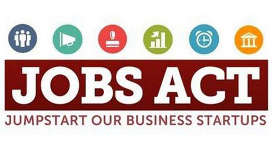Protecting the Public from (Certain) Emerging Growth Companies
 Part one of this blog post concluded that Fantex’s IPO represents an unintended consequence of the 2012 JOBS Act. The costs imposed on startups attempting to go public are significant, and the burden of complying with mandatory disclosure laws can deter even the most-attractive startups from commencing an IPO. The JOBS Act is intended to decrease the burden on startups attempting to raise necessary capital by reducing the financial disclosure requirements normally imposed on public companies.
Part one of this blog post concluded that Fantex’s IPO represents an unintended consequence of the 2012 JOBS Act. The costs imposed on startups attempting to go public are significant, and the burden of complying with mandatory disclosure laws can deter even the most-attractive startups from commencing an IPO. The JOBS Act is intended to decrease the burden on startups attempting to raise necessary capital by reducing the financial disclosure requirements normally imposed on public companies.
One way the Act reduces disclosure is through the status of “emerging growth company.” Most notably, an emerging growth company is defined as an entity with less than $1 billion in annual revenue. By falling within this broad definition, a startup may take advantage of reduced disclosure requirements for up to five years.
Based on this $1 billion threshold, the definition of emerging growth company is broad enough to encompass companies either experiencing an accelerated growth rate or with high-growth potential. Unfortunately, Fantex also falls within this broad definition of emerging growth company, as noted in its prospectus. Therefore, the real question is whether the definition is too broad so that companies with little, or no, demonstrated growth are being granted the same access to the investing public as companies that are actually growing.
